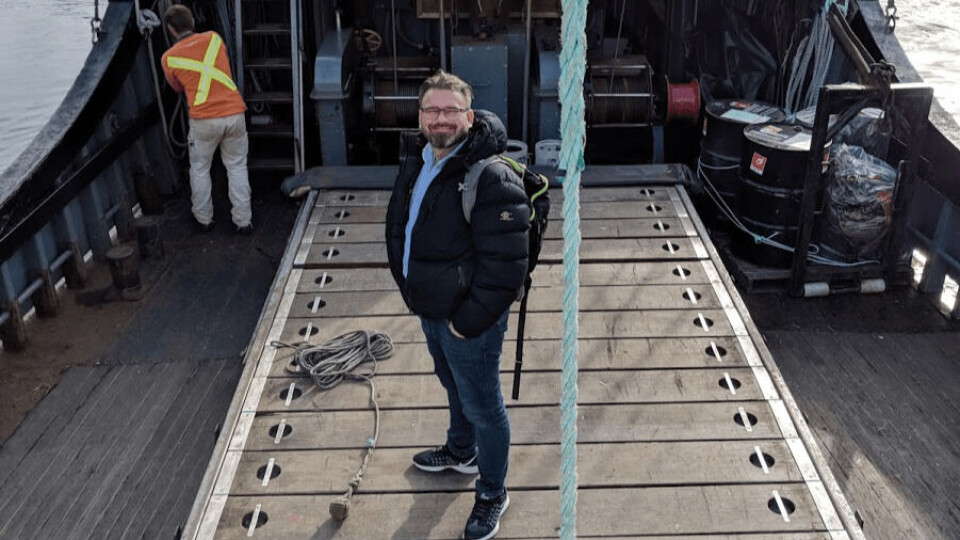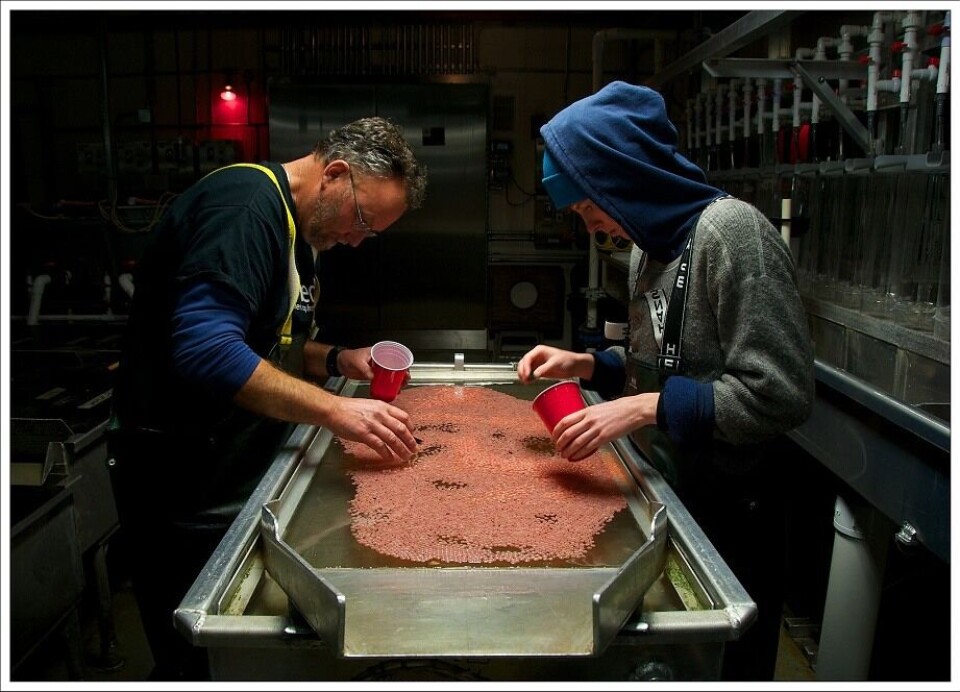
Harmful algae bloom leaves farmers with questions
Members of the Norwegian Seafood Association have flown almost 4,400 miles to reach Campbell River on Vancouver Island in British Columbia, where they yesterday attended the second day of a study trip that focused on harmful algal blooms.
In early May northern Norway was hit by a harmful algal bloom (HAB) event that killed eight million fish. Knut Inge Nicolaysen, operations manager for Ballangen Sjøfarm AS, shared his experience.
“We had three sites and we lost two and a half million salmon. The damages were in the hundreds of millions (of kroner).”
Overall, Norway lost 11,000 tonnes of salmon worth almost $82 million. Fish started dying on May 1 and the mortalities continued for almost three weeks. Algae came into contact with the membranes of the fish gills, destroying them. This led to oxygen deprivation and the fish started to die within hours.
No exact cause
There has been no definitive answer that pinpoints the exact cause of the HABs that wreaked so much harm on the nine farming companies affected. Global warming was a topic of discussion during the study trip.
“There was a mix of several things that made it possible to lose so much fish; we had a lot of freshwater downfall during the period of the algae bloom. It’s difficult to say, we have not found a reason,” said Nicolaysen.
“On the two sites where we had most of the mortality, 90% of the fish died.” The remaining salmon were harvested, in some cases dying on the way to the slaughter plant. “At the third location we managed to rescue 2,000 tonnes, but that’s it,” added Nicolaysen.
Clean up
“Everyone came together to help clean up because we work together with other fish farmers. That is what we do at home (in Norway). The other fish farms helped us very quickly. They just showed up. I have been a farmer for 35 years; I've seen a lot, but nothing like this.”
Fish were dying faster than the farmers could process them.
“It's interesting what is done in Canada,” added Nicolaysen. “To see how you (the Canadian farmers) monitor the environment from day to day. I think we need to do something similar in Norway as well. I think it is best to have an overall watch program and see what happens. We need record-keeping programs and a plan to help the fish and protect the fish. Toxicity is a curse.”
During this week’s visit to a Grieg Seafood salmon farm, employees explained that they test water quality in the pens twice a day. Sea lice counts are done once per month depending on the season. Grieg also uses aeration systems at its BC farms. The Norwegian farmers found it to be an interesting technique in HAB mitigation.
When algal blooms start to die the decomposition process uses up the oxygen in the water, therefore oxygen is not available for the salmon and they start to die. Using aeration techniques gives the fish more oxygen and can protect the fish from HABs. It’s a technique Nicolaysen plans to share with his fellow farmers in Norway.

Hatchery visit
At the end of day two the Norwegian group visited the Quinsam River Hatchery in Campbell River where they learned about Pacific wild salmon restoration. During the visit eggs were being processed by employees who explained that they stock the rivers with pink salmon, chum and coho – all species that are native to the Pacific coast.
Often they release up to 60,000 fish into the local water ways. Each fish is tagged before being released into the wild so its origins and DNA information can be determined at a later date. The Canadian government plans to dedicate $142 million over five years to the wild Pacific salmon restoration programs.























































